This post was last updated on April 10, 2020 by Preethi Sukumaran
It is April 2020, and as I look at this article we wrote nearly 9 years ago, as an introduction to soapberries, the wonderful fruit cleanser, I continue to be amazed. While we and soapberries have come a long way in India, I am surprised by how few people have heard of this wonderful Indian fruit even in 2020. If you are looking for a non toxic and clean start to household chores like laundry, dish washing, floor mopping, etc, soapberries are an excellent start.
Most people are stunned by just how versatile soapberries are. With some ingenuity, interest and enthusiasm, you can slowly substitute all toxic home cleaners with soapberries (and other herbs). Read on for more soapberry facts.
An introduction to soapberries: The detergent that grows on Trees
If you think that detergents are found only on supermarket shelves, then be prepared for a clean, green surprise.

It grows on trees and has been cleaning clothes (and people) since the time of the Buddha! In fact, some sources also add the Buddha to its list of satisfied consumers.
Say hello to the Sapindus – a group of around 10 species of trees whose fruits can be used as foaming cleaners or surfactants to use a more technical term. The unique surfactant property of the Sapindus fruit makes it an all purpose cleaner – for skin, hair, laundry, dishes and pretty much anything else that requires cleaning.
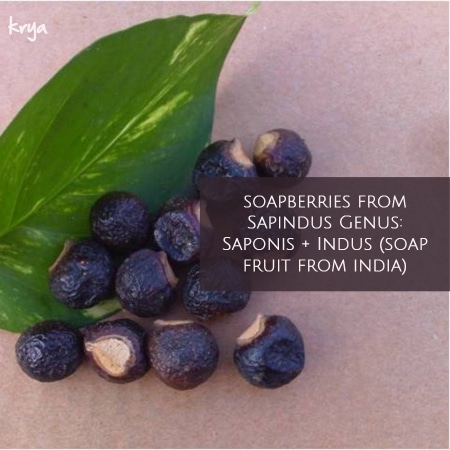
The name Sapindus is derived from the Latin words Saponis, meaning soap and Indicus, meaning from India. The part of the Sapindus tree used as a surfactant is the fruit and it is commonly known as soapnut. Since it is a fruit, We prefer to call it the soapberry which is more accurate.
An introduction to soapberries: auspicious, cleansing and indigenous to India
India is home to several species of Sapindus. The two most well known of these are the South Indian Sapindus trifoliatus and the Himalayan Sapindus mukorossi.
We have also seen records of a third species, Sapindus emarginatus, although many botanists believe that emarginatus is a sub species of Sapindus trifoliatus.
Both species of soapberries have their own medicinal uses. Some Ayurvedic texts opine that Sapindus trifoliatus is indigenous to India and Sapindus mukorossi is indigenous to china, and spread to India via China and Nepal.
However, both varieties are mentioned in Ayurvedic texts. Soapberry or Arishtaka is described for various internal and external applications. It is called “Phenila” or a fruit that is foamy / generates lather. It is used for wound cleansing, especially in eczema and gangrenous wounds.
In China the soapberry pericarp is called wu-huan-zi or the non illness fruit. In Japan, the soapberry pericarp is called the enmei-hi or the life prolonging pericarp. In India, in Ayurveda, this herb is referred to as “Mangalya” or auspicious, and is suggested as a key dravya (medicine) to treat graha dosha (psychiataric disorders).
The Soapberry Fruit

Fresh soapberry fruits look like grapes or gooseberry fruits and grow in clusters on the trees. As the name suggests, the Sapindus trifoliatus grows in clusters of three. It takes 9-10 years for a Soapberry tree to reach full maturity.
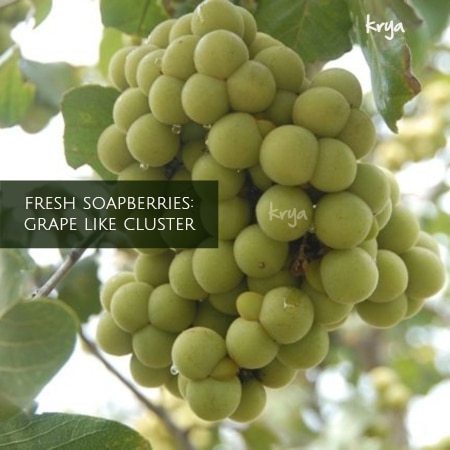
After this, a well cared for soapberry tree can produce 250 kg of soapberry fruits every single year!
An introduction to soapberries: the natural cleanser
The magic ingredient which gives the soapberry its halo is saponin, found in the fleshy outer part of the fruit.
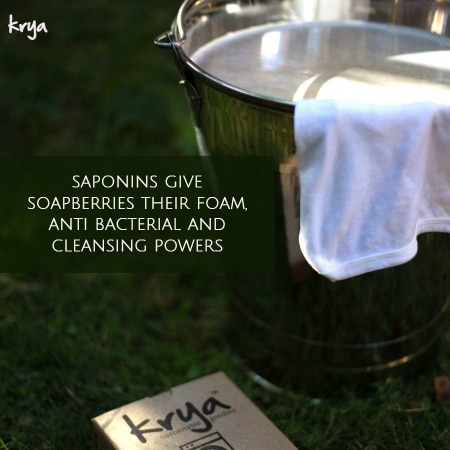
The pericarp of the soapberries (the outer fleshy part of the fruit) contains saponins, which are the plants “immune system”. Saponins are a class of compounds, found in abundance in the plant world, and produce foaming solutions in water which can used for cleaning.
The saponins also give Soapberries its bitter / “tikta” taste, and also give it its anti bacterial, anti fungal and insecticidal properties.
An introduction to soapberries: what you can use it for around your home
One of the most sought after questions when we are asked to do an introduction to soapberries , is on how you can use this versatile natural fruit in your home. The soapberry is an excellent natural cleanser that can be used as a base ingredient to substitute most synthetic cleansers in your home.
You can use the soapberry shells , soapberry powder, or extract soapberry liquid by making a concentrated decoction with water and use this as a substitute for almost all your cleaning needs.
It can be used in the following ways:
- As a mild shampoo substitute along with other conditioning herbs – using soapberry liquid alone can dry out hair
-
- The Krya range of Ayurvedic hair cleanser choornams use Soapberry along with other beneficial herbs to gently cleanse scalp, control conditions like dandruff and gently cleanse and condition hair without chemicals
-
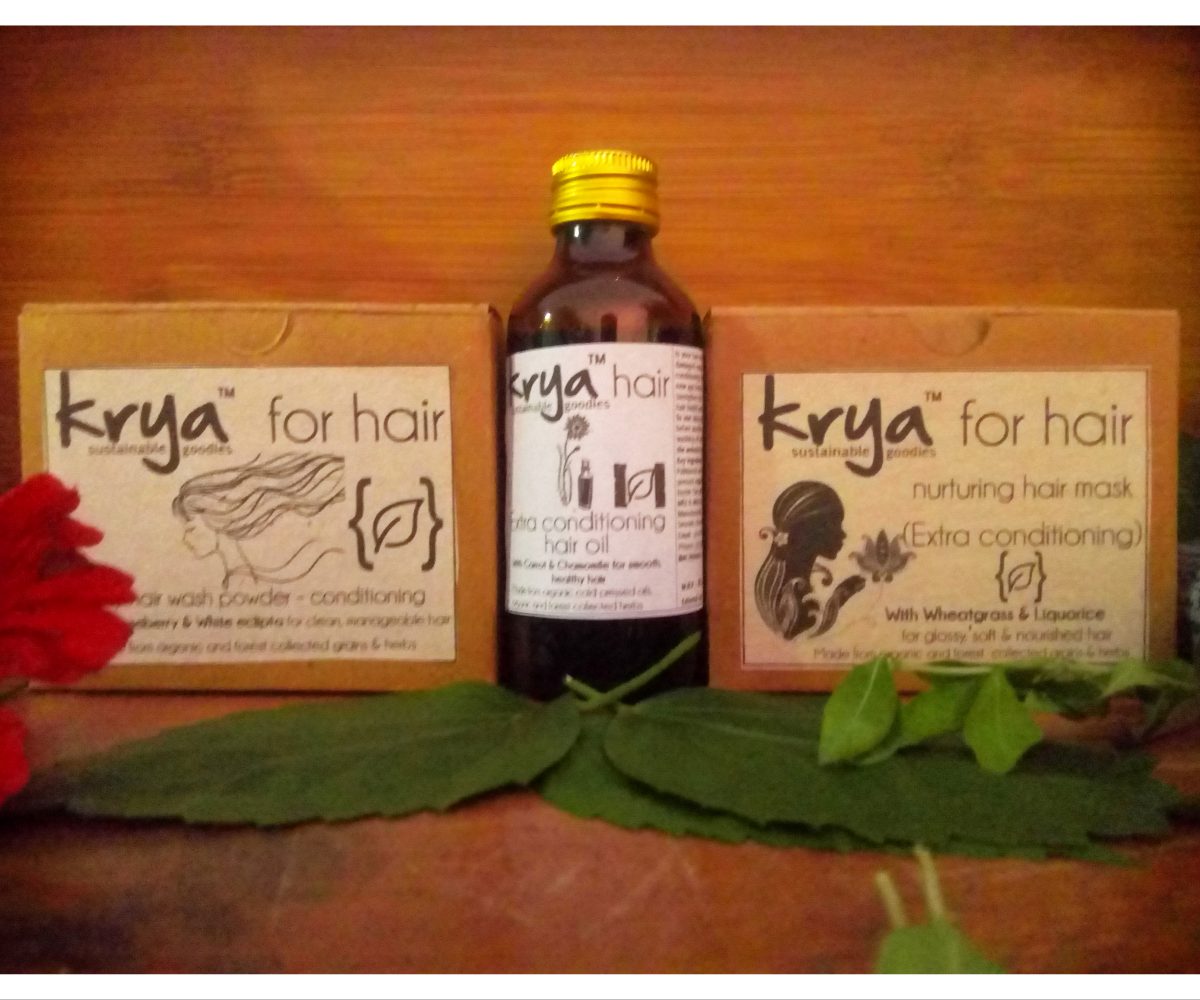
- As a safe and effective detergent
- Soapberries can be used whole, soaked in hot water, as a liquid extract or as a fine powder
- Krya has a wide range of soapberry based detergents that can be used in Front, Top Load and HE washing machines
- Soapberries can be used whole, soaked in hot water, as a liquid extract or as a fine powder
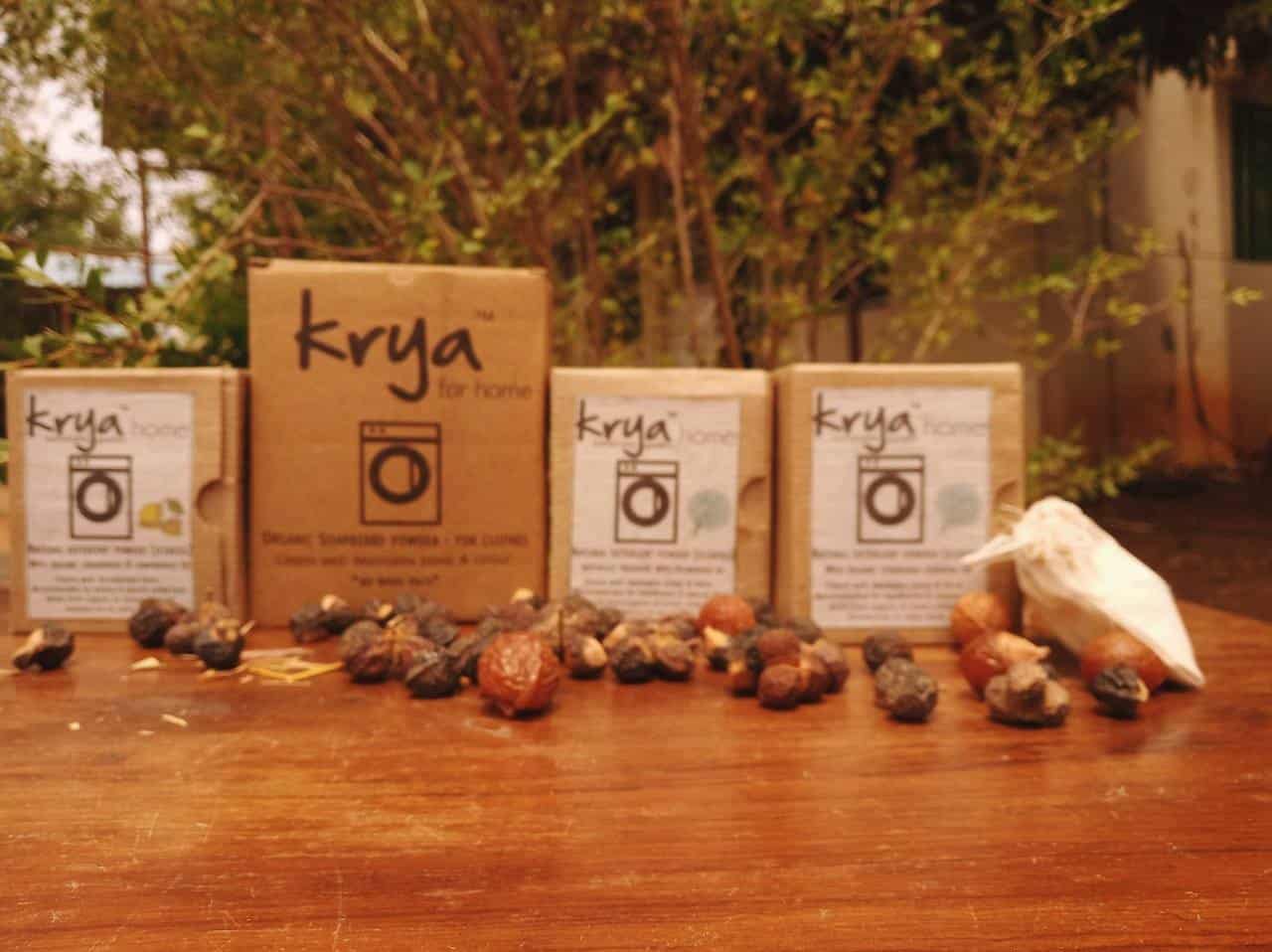
- As a hypoallergenic baby fabric detergent
-
- Soapberries can be used whole, soaked in hot water, as a liquid extract or as a fine powder
- We recommend using the unfragranced Krya Classic detergent for baby’s cloth diapers and nappies and clothing
- For baby’s linen, and other fabric, please try the Krya Rakshoghna Detergent, formulated according to ayurvedic principles to safely sanitise and disinfect baby’s linen – coming soon!
- Soapberries can be used whole, soaked in hot water, as a liquid extract or as a fine powder
-
- As a food-safe dish wash product
-
- Soapberries can be used singly or with a combination of other beneficial herbs like Neem leaf, Lemon, Cow Dung, etc. This is a much better alternative to synthetic dishwash products which are highly toxic on soil and in water and are also very irritating on skin
- Krya has a wide range of Soapberry based dishwash products for regular dishes and a special variant for cleaning brass and copper vessels without chemicals.
- Soapberries can be used singly or with a combination of other beneficial herbs like Neem leaf, Lemon, Cow Dung, etc. This is a much better alternative to synthetic dishwash products which are highly toxic on soil and in water and are also very irritating on skin
-
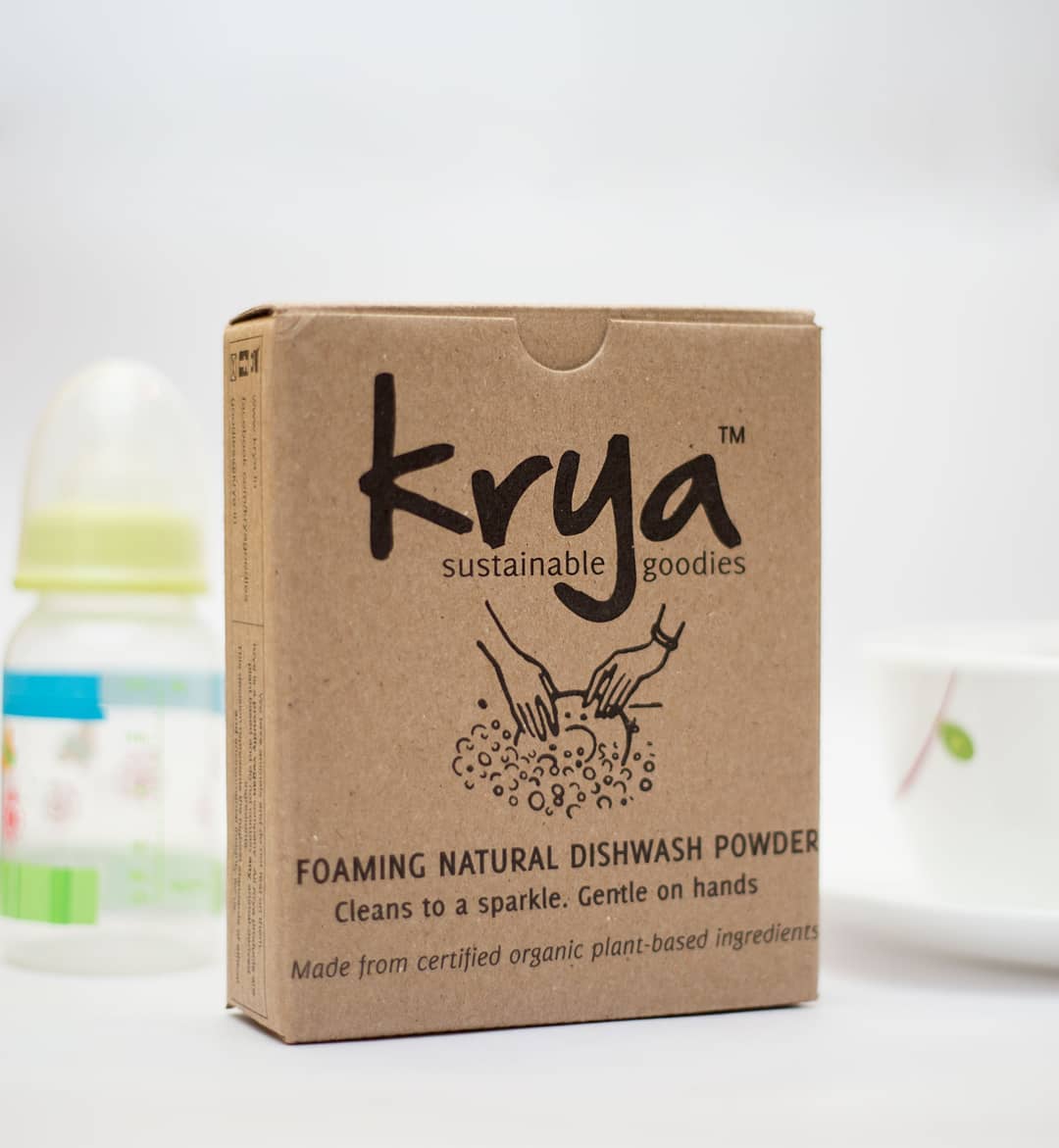
- As a floor and surface cleanser
-
- Soapberries should be ideally used in combination with other herbs that have Prana positive, Vitality enhancing, Krimighna and Rakshigna properties. Please read this blog post to see how you can construct a DIY floor cleaner with Soapberries
- Krya has 2 floor cleaners which use Soapberries in the formulation: Krya Sookshma and Krya Sugandha floor cleaners.
-
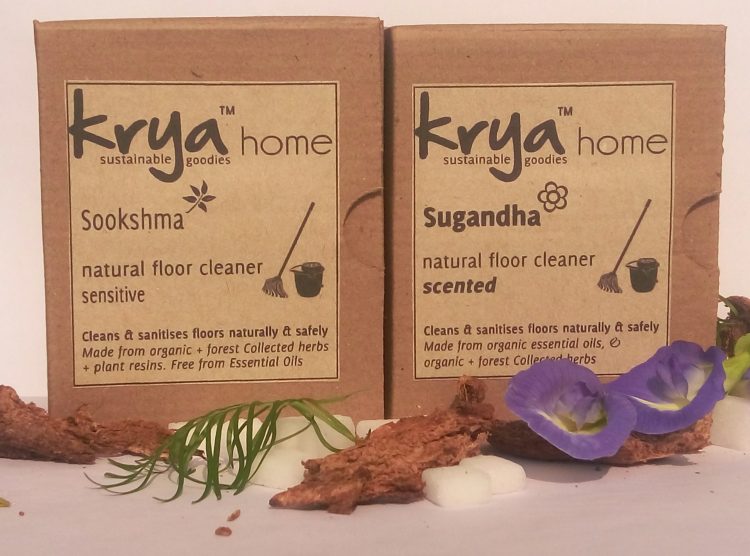
An introduction to soapberries: what are its other uses?
Our introduction to soapberries needs to cover its many other uses. Plants are wonderfully complex systems that are beyond complete human understanding. All along we have only talked about the surfactant property but the soapberry does so much more than just clean.
a. Pesticide removal action of soapberries: fruits and vegetables
Soapberry powder works well on removing surface level pesticides in fruits and vegetables as well. Research done on tomatoes, aubergines, cabbage and grapes, which have a thin membrane and are prone to absorbing a large quantity of pesticides, indicates a 76% reduction in deadly pesticides like Monocrotophos, when these fruits and vegetables are soaked for 20 minutes in a mild solution of water and soapberry powder. Be careful to thoroughly rinse off all the soak-water off the soaked vegetables.
Please note that this soaking will only remove surface level pesticides that are sprayed after the crop has been harvested. It will not be able to remove what the produce has absorbed during its growth cycle. For this reason it is always better to consume organic produce as much as possible.
b. Pesticide removal action of soapberries: on cotton
Cotton is one of the most sprayed crops in the world. In India, cotton crop is sprayed with a deadly cocktail of chemicals including Lindane, Heptachlor, and DDT.
A simple test measuring the surface level pesticides on cotton yarn before and after treatment with soapberry, showed nearly a 70% reduction in the surface levels of Lindane.
c. Anti-bacterial and anti-fungal action of soapberries
Soapberries have strong anti-fungal and anti-bacterial properties. They have been prescribed in small quantities in oral medications in traditional Chinese medicine.
Extracts of Sapindus mukorossi were shown to inhibit the bacterium Helicobacter pylori which causes GERD, peptic ulcers, cancers of the oesophagus and stomach. Preliminary studies on Sapindus mukorossi and Sapindus saponaria show active action against many disease causing fungi like Candida albicans, and bacteria like Pseudomonas Aeruginosa and Staphylococcus Aureus.
Please remember that Ayurveda considers Soapberry a “Garbaphatana” or a natural abortificent. It also has natural spermicidal action. So any internal use should only be considered if you are not pregnant and only under the direct supervision of a good Vaidya.
How do I start using the soapberry?

Fresh soapberry fruits need to be dried well to be used. Once dried, they become a rich dark brown colour, depending on the species and look like this:
Once dried, they need to be de-seeded before they are ready for use. Soapberries are extremely hygroscopic in nature, meaning that they absorb moisture from the atmosphere, so they need to be stored in a dry place.
1.How to use whole soapberries
Whole soapberries need to be activated and mildly extracted before using them. If you’re using them to do your laundry in a washing machine, start by soaking 5-6 whole soapberry shells in a clean sock / muslin bag in hot water.
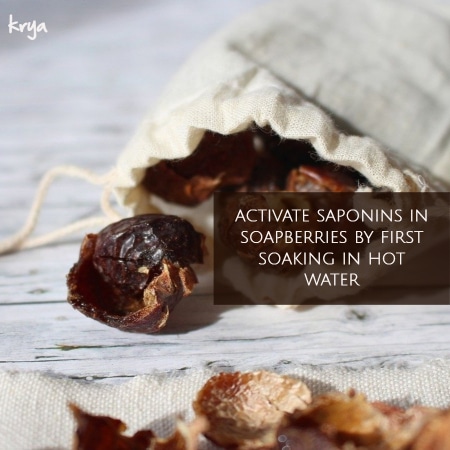
After 20 minutes, place the muslin bag into the drum of the washing machine, and add the extracted liquid into the detergent dispense or directly into the drum, if using a top load machine.
Depending upon the extraction levels of saponin, you can use the whole soapberries 2-3 times. Remember to let them dry before the next wash. You can use the soapberries until they turn grey in colour (indicating that there are no more saponins left). Best of all, as soapberries are completely natural and biodegradable, they can be composted.
2. Making soapberry powder from dried soapberries
For even better results and greater convenience, soapberry powder can be made by grinding dried, de-seeded soapberries. They can be ground in a mixer grinder with some effort, and should be ground into large sized particles when used as a detergent or a dish wash product. The finer soapberries are ground, the faster they absorb moisture, so grinding them into large sized particles helps you store them for longer.
Please note that soapberries must be extremely well dried before you attempt to make a powder. Soapberries are extremely sticky, especially in humid places and exude a sticky residue. This makes them very difficult to grind properly esepcially in domestic machines. If your soapberries are not well dried, you can easily damage your mixer grinder.
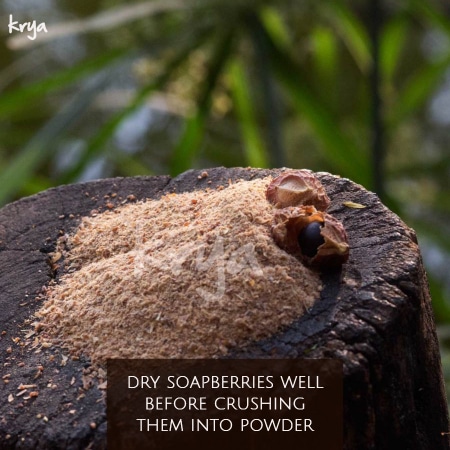
Soapberry powder can be used as a substitute to detergents and dish wash applications. Keep in mind that they do not dissolve completely like synthetic surfactants, so when using them in a washing machine or a dish washer, put the powder into a sock or muslin bag, to keep the residue from sticking onto laundry or dishes.
The residue after use as a detergent or dish wash makes for great plant food so do remember to compost the residue after use.
Making soapberry powder is the most difficult way to use whole soapberries. It is better to use whole soapberries or make a liquid extract as soapberry power is slightly difficult to make.
3. Extracting Soapberry liquid
You can also extract soapberry liquid for use as a detergent or a floor cleanser. Soapberry liquid needs to be refrigerated and does not keep for more than a month.
It is prepared by soaking soapberries overnight in cold water or soaking them in hot water for 15 minutes to an hour and squeezing out the saponins mechanically until the berries turn grey in colour.
Let the soapberry liquid cool slightly before filtering out the soapberry residue. The residue can be dried and re-used again to make more floor cleanser (the cleanser made with this residue will be more dilute, so reduce the water the second time around) or to do the laundry. The soapberry powder / residue can be re-used until the residue turns grey, indicating the absence of saponins.
Again remember, to compost the residue after making your soapberry liquid – unlike other trash which doesn’t go away, soapberries bio-degrade and can be composted.
Do I have to work very hard to use the soapberry?
The soapberry is making a strong comeback into popular use especially in countries like USA, Australia, Singapore, India and other places. A lot of the work done on the soapberry in recent times has been directed to making it readily usable so that you do not have to go through the process of buying the fruit and making a powder or extract.
Unfortunately a lot of incorrect information also floats around the internet on the properties of the soapberry. We have seen many blogs referencing its use in internal consumption without understanding its properties properly.
As we often say about herbs, it is important to understand their properties correctly and then only use them. For this we need the support of a strong system of medicine and herb knowledge that can provide us the correct framework to understand the properties of herbs.
India’s traditional medicine systems of Ayurveda and Siddha are of ancient origin, have been practiced over thousands of years and have in-depth knowledge of indigenous herbs and how they can be effectively utilised.
Soaopberry is clearly mention in Ayurvedic texts as a cleansing and mangalya herb, which foams and is excellent for many external cleansing functions including cleansing gangrenous wounds. It is selectively used internally depending upon the condition under the guidance of a vaidya. It is not recommended internally for all.
Please ensure you get your herb knowledge, including about soapberries from the right source. Do not experiment unnecessarily. For all external cleansing needs, please use the information given in this post. If you feel you need a jump start with ready made products, please explore our website.
To sum up: an introduction to soapberries
We do many daily tasks like the laundry on autopilot now and understandably so. However several drastic concerns for the environment and human health are lurking behind many of these “autopilot” routines. In 2020, the entire world is going through a pandemic and we are all collectively examining the choices that lead us to this stage. Being mindful about our everyday choices, and ensuring that we do as little damage to the water, soil and earth around us has never been more important.
Many of the little everyday choices we exercise are fraught with environmental risk. For example the synthetic detergent industry is red flagged for pollution by many governments. These red flags arise out of pollution concerns during manufacture and severe harm to water bodies and marine ecosystems by detergent residue post consumer use.
Apart from detergents many personal care products like shampoo, body wash, toothpaste use a synthetic surfactant as a foaming agent. Look for either sodium lauryl sulphate or sodium laureth sulphate (referred shortly as SLS) in the ingredient list the next time you are in the supermarket and you will be surprised by the number of times these two surfactants appear. There are many studies that point to these synthetic surfactants as carcinogens so much so that “SLS free “is an important new category of products.
Moving from autopilot to manual mode can throw up interesting natural alternatives to most of the products we use on ourselves and in the home. Every time you choose a natural alternative like the soapberry, you choose better health for your family and a cleaner planet.
We hope you enjoyed this introduction to soapberries, the versatile, natural cleaning fruit. If you have any questions o this, or would need help transitioning to natural products, please write to us or call us (0-75500-89090).

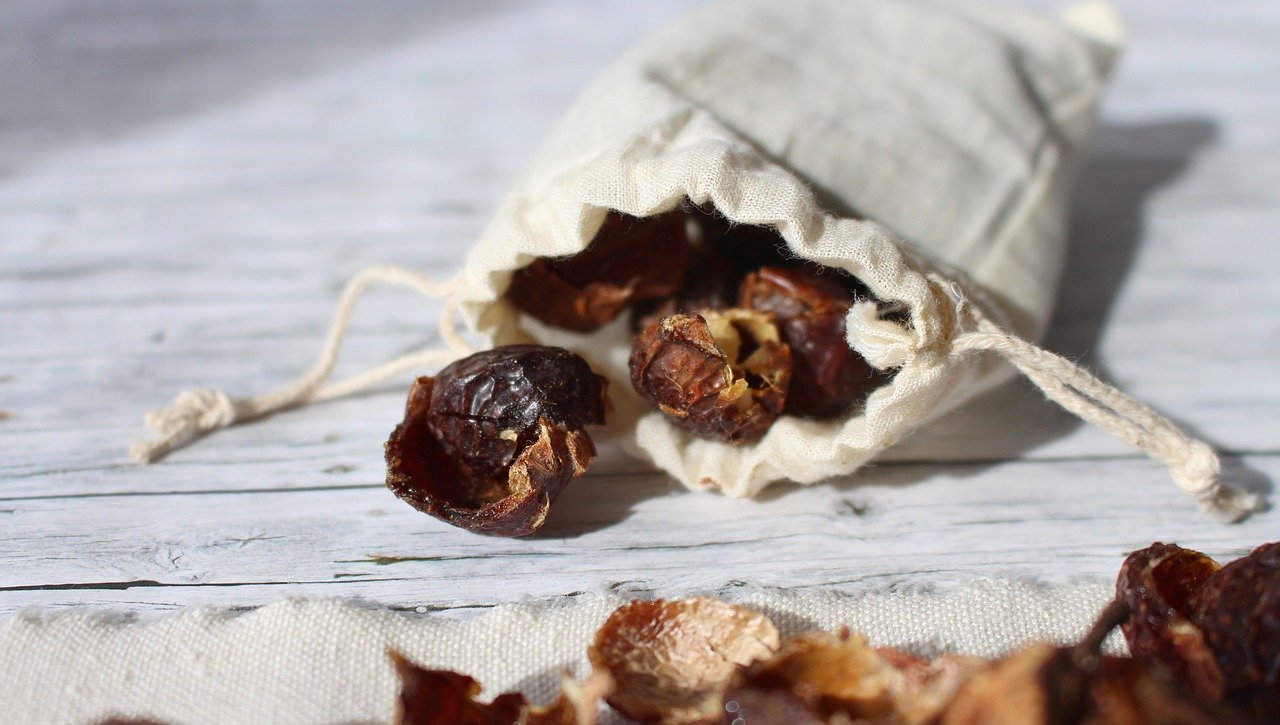


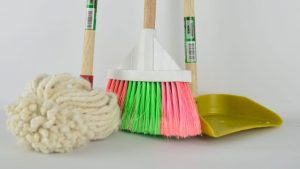

Very informative and useful article. Thanks for bringing everyones attention to it. just one thing, Soapberries are popularly known as Reetha(i think thats what you guys are talking about)…Brands like Nyle, Ayur still sell their shampoos using reetha as a highlighted ingridient. It’ll be helpful for your indian readers to recognize and identify if you’ll mention it in your article. I know people who used to washed their hair, clothes in Reetha. Nyways, great effort!!
Hi Shradha
Thanks for your comments ! Yes, we are talking about reetha here. Since we wrote this article originally for a South-East Asian magazine, we did not refer to the Indian names. In the rest of our blog we refer to the different Indian names of Soapberry extensively. We are glad you liked the article.
Nice article. i phoned to you through my friend baskar running a organic shop in coimbatore. in tamilnadu the soap beerries called as “poondi kottai” or in local words soopukaai. my heartful wishes to ur newbusiness venture.
P.satheesh,AE ,PWD
9865679999
Hi Satheesh,
Right you are – the soapberry is also called boondi kottai or soappukkai in tamil.
Thank you for the warm wishes and Bhaskar’s reference – he did call us and we will take the conversation further with him.
In my childhood days we used to play with these and my grand mas used these berries for washing clothes and for cleaning Jewels.So nice….
Thanks for dropping by Aparna! Yes soapberries have been part of our tradition for a long time – We read somewhere that the Buddha used soapberries to wash his clothes as well!
Nice one.
I am definitely going to try. BTW, is it Antuvaladakai in Kannada? Or sigekai?
Thanks.
Gananath,
Thank you for dropping by and deciding to try out the eco friendly option to cleaning – Soapberries are called “norekkai” in Kannada.
Environmentally Intelligent design and Cradle to cradle can I work with you!!!??? 🙂
🙂 We would love it! Lets talk once we’ve scaled Krya up further, and do keep in touch 🙂
I wonder if any of you remember using something called “arappodi” to wash vessels. I have been searching high and low for that now, but unable to find it. Seems like everyone has forgotten about it! My grandmother used to say that it was made from tamarind leaves / seeds. It used to clean even greasy vessels very well. Any idea on where to find it? Or any other natural dishwashing powder that doesn’t use soapberry powder, as I don’t have any way of grinding soapnuts?
Priya:
Arappu thool is probably what you are referring to – This is made from the dried oil cake of Pungamia or Mahua oil seeds. The Mahua oil is high in fat content and are generally used as cattle feed although they can be used for soap making as well. This is unfortunately no longer available in traditional grocers or Nattuu Marundu kadais as people have moved past this into chemical dish wash products.
Soapbery powder is readily available in Nattu marundu kadais and the dabba Chetty shops in Kutchery road in Mylapore – you should not find it difficult to find at all. Otherwise you can substitute a higher quantity of Shikakai powder – that should work just as well, but will not give any lather.
Any idea where it can be bought in Karnataka? I asked around in stores in the general market place with no luck. I tried asking for ‘norekkai’. :/
I love your articles, Preethi! 🙂
Hey Samantha: Thank you muchly 🙂
My friends in Bangalore tell me that you should look for shops that are called “Granthige Angadi”, which sell ayurvedic ingredients and pooja / homa materials. In Bangalore, some of these shops are near KR Market, few in Gandhi bazaar opposite to Ice thunder builiding & a few in Malleswaram as well.
Do let me know how this works for you.
I will try that! Thank you 🙂
hi preethi and sreenivas,
i read about your new venture in the Bhoomi magazine. Congrats to you both. We live in jamshedpur and would be happy if u could tell us where to get your products from? if u visit kolkata next time you could drop by in jamshedpur and speak to the people here about this great product. all the best
Thank you so much Anjali! Have written to you.
Hi Preethi and Sreenivas, I read about you on economictimes today, and navigated to see your website immediately. I thought it was just another product branded ‘organic’, but what really got me interested was all the whitepapers and knowledge you have shared with us about how this product is made and what it is comprised of. Therefore, I would like to really try it out. Will order one. Something came to my mind – when my son was a baby we used to look for mild detergents and use ‘Sunlight laundry soap’ – a Unilever brand thinking its the mildest. How I wish this was around earlier? Its better late than never. So as an afterthought I think that people might love it if you release variants/products for babies out of these ingredients. Please do, you will save many from skin allergies. Also, I wish that your products should clearly be ahead of the pseudo artificial-natural products (quite confusing whether they are artificial or natural). I wish you all the best, and may God guide you in your endeavor. Vishnu
Hi Vishnu !
Thank you for the kind words and wishes ! In it’s current avatar, the Krya detergent is already the safest detergent for babies’ clothes. While it is a hard-working, all-purpose detergent, the fact that it is made from 100% organic, plant based ingredients appeals to parents of small babies. We have started a conversation on this benefit of the Krya detergent with new-parents community.
As a principle we will not launch a variant, unless we find an ingredient or process improvement that significantly alters the core formulation, thereby fulfilling an unmet consumer need. In this way we help consumers, especially new parents stressed for time, make a quick and easy purchase decision.
We look forward to hearing from you on your experience with the Krya detergent and sincerely hope that it fulfills the purpose with which you purchased it.
Hi Preethi, Bear with me for the late reply. I have tested Krya detergent and people in my family were not aware that it could be used for purposes other than cleaning jewels. I tested it on an IFB Frontload and threw the small cotton bag with Krya detergent directly into the drum. The results are very good. I love the fresh neutral smell after clothes are dried. Cleaning is effective – my white cotton vests haven’t got a brown tint. That’s what critics expected out of the product before me trying this out. I have been cleaning Tupperware water bottles with Krya, as I feel more confident about not having to imbibe soap residue (when they are washed with washing bars/powders). I ordered more quantities for my relatives who liked the results. Will send more feedback as I use it more.
Hi Vishnu,
We are so thrilled to read this and are glad you and Krya have triumphed over the skeptics 🙂 Thank you for this detailed feedback. We are launching Krya’s dishwash in a month, so we should be able to offer you a solution for your Tupperware bottles then. Incidentally have you considered using stainless steel water bottles instead? Better for the environment, more long lasting and much better for your health as well.
When my sister lived in coimbatoor she used to buy a green colored powder that smelled like a leaf and this she used for washing hair instead of shampoo. It is not available in Chennai as far as I know. It made the hair very silky. What is that green powder that had the consistency of a shampoo and where can I get it. Can you tell me all about it? I am talking about this in the 1960s.
thanks
i need soapberries from where i could get?
please tell i am from hyderabad
Hi Suresh, Soapberry fruits should be easily available in your local market that sells natural and ayurvedic ingredients.
Do soap berries help with scaling problem observed in washing machines? I have used Krya original detergent powder as a bachelor when it was first launched many years ago but I never got to test this. Recently I’ve been noticing sticky residue from market detergent, characteristic of hard water usage, will Krya detergent work as a descaler?
Please try the Krya LEmon detergent – will work better for hard water. And there should not be any residue.